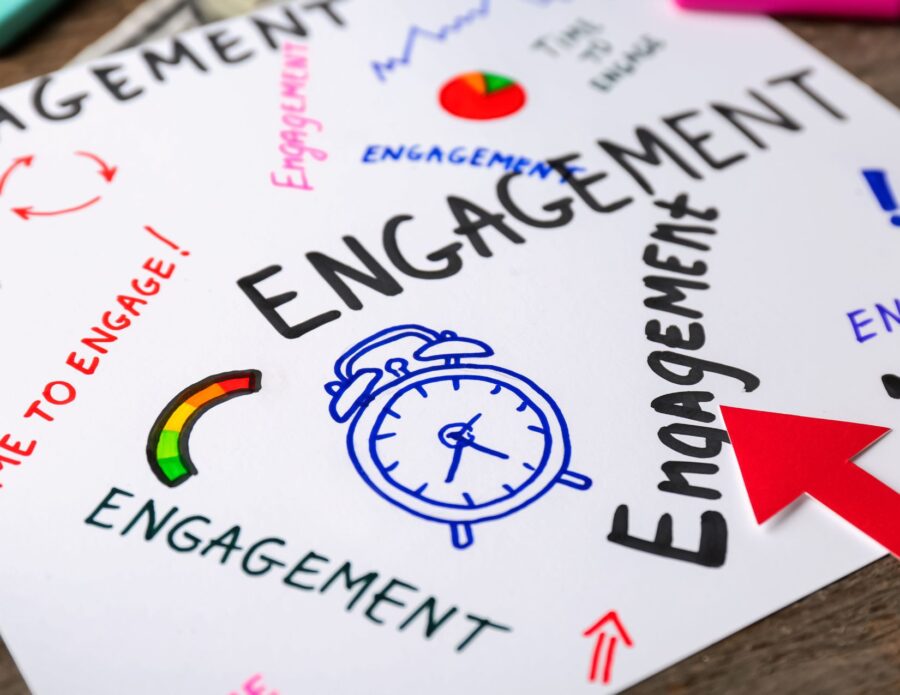For me, it happened in March of 2020, when education went to distance learning… literally overnight. We as teachers were thrown a curve ball, a change-up, a sinker, a fast ball… and some struck out. While others were able to walk their way to the end of the school year, some took two strikes, hit that fastball and ran with it! The age of distance learning was there to stay for a while, and for some districts remain in some form or fashion. There are a lot of dynamics to distance learning that we had to consider, with the most important being student engagement. And that’s when I learned that… I had a lot to learn!
We have always been tasked with the responsibility as educators to engage our students. When we are in person and hands on, one would think that engagement is fairly easy, but it actually is not. And if you think engaging gen ed students are troublesome, imagine engaging students with severe disabilities who have a myriad of “other” things teachers have to consider! The pandemic and distance learning truly made that clear! And if we didn’t know what engagement was before the pandemic, we definitely learned during the pandemic.
Educational engagement, in a nut shell, refers to the degree of attention, curiosity, interest, optimism, and passion that students show when they are learning or being taught. Engagement is important because if our students are not engaged, it is safe to say they are not motivated to learn. No motivation equals no learning. Student engagement can be both a rewarding and challenging task. But there are several strategies and can help foster student engagement and lead to active participation and a positive learning environment. So, for all new teachers and veteran teachers alike, here are some ideas to engage your students!
- Create a Positive Learning Environment
Build rapport by taking the time to get to know your students and let them get to know you. A positive relationship can go a long way in creating a comfortable classroom where students feel safe to share ideas and ask questions. Establish clear expectations by making sure students know what is expected of them, both in terms of behavior and academic work. This helps them feel more confident and focused.
- Incorporate Interactive Learning
Assign group projects or activities that encourage collaboration and discussion. Students are often more engaged when they can work together and learn from each other. Incorporated hands on activities such as experiments, simulations, or role-playing exercises that allow students to interact with the material in an active way. Also, utilize educational technology such as apps, virtual field trips, or interactive learning platforms (e.g., Kahoot, Padlet) to make learning fun and engaging. One activity my students absolutely loved during summer school was when we explored theme parks and went on the virtual roller coaster rides!
- Make Lessons Relevant
Connect to real-world issues by showing students how what they are learning applies to their lives or current events. When students understand the real-world relevance of a topic, they are more likely to stay engaged. Another way of making the material relevant is by trying to relate the content to students’ personal interests and passions, which can make lessons more relatable and motivating.
- Use Active Learning Strategies
Engage students by asking questions that require more than a simple yes/no answer. This encourages critical thinking and class participation. Give students time to think individually about a question, then discuss it with a partner before sharing with the class. This method can help shy students feel more comfortable speaking. Have students review material outside of class (e.g., through videos or reading) and use class time for discussion, problem-solving, and application of knowledge.
- Gamify Learning
Turn quizzes and reviews into competitive games, such as trivia or competitions. This can make even standard review sessions exciting and help reinforce learning. Use a system of rewards (e.g., badges, certificates, or class privileges) to motivate students and recognize their achievements.
- Foster Student Autonomy
Allow students some autonomy in how they learn. This could include choosing projects, topics for research, or even how they wish to demonstrate their knowledge. If possible, tailor content or assignments to fit students’ learning styles and individual needs.
- Incorporate Active Reflection
Give students the opportunity to reflect on their learning through self-assessment or journaling. This allows them to think critically about their progress and areas for improvement. Encourage peer review and feedback, which promotes collaboration and allows students to learn from each other.
- Encourage Critical Thinking
Engage students in structured debates or discussions on relevant topics. This encourages them to think critically, research, and present their viewpoints. Use case studies, puzzles, or real-life scenarios that challenge students to apply what they’ve learned and come up with solutions.
- Incorporate Movement and Breaks
Incorporate short, structured breaks during lessons. A quick stretch or physical activity can help refresh students and improve focus. Allow students to move around the classroom or choose seating arrangements that help them engage more effectively when appropriate.
- Provide Positive Feedback and Encouragement
Praise students not only for getting the right answer but also for their effort, persistence, and creativity. Positive reinforcement boosts morale and encourages continued engagement. Offer feedback that is specific and actionable. Students are more likely to stay engaged when they understand how to improve.
By creating a dynamic and interactive classroom, you’ll help students become more invested in their learning and develop a deeper understanding of the material. You will foster a love for learning and your students will be all the better for it! What’s your favorite resource? Post it in the comments so we can build an amazing resource page!



